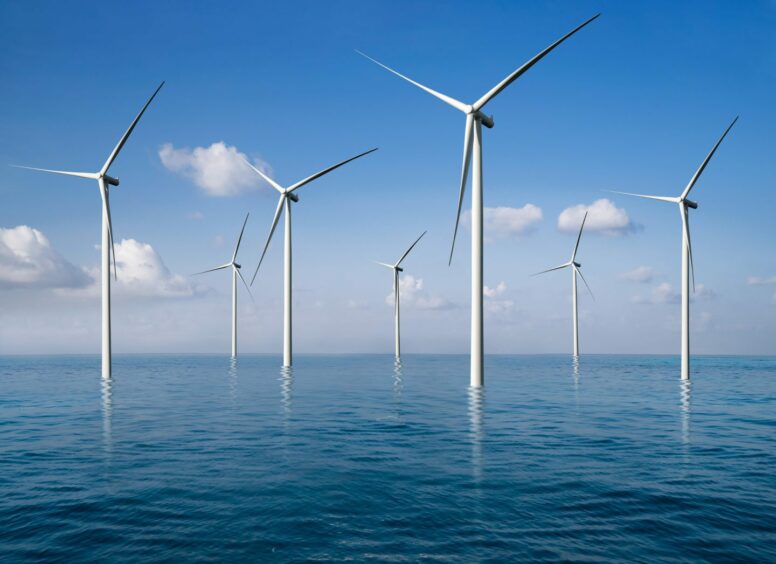
The UK government has announced the winners of its annual Contracts for Difference (CfD) round as Miliband described “record-setting” year.
Following last year’s “disastrous” Allocation Round (AR), energy secretary Ed Miliband announced that Inch Cape A and B, alongside Moray Offshore Windfarm (West) and others had been successful in AR6.
In late July the UK government announced an increased budget for the renewable energy auction to £1.5 billion, this translated to an extra £300 million being added to the offshore wind pot.
The overall AR6 budget was seven times higher than last year’s failed AR5 auction, which received no offshore wind bids.
Miliband said: “We inherited a broken energy policy, including last year’s disastrous auction round which gave us no successful offshore wind projects.
“Today we have now achieved a record-setting round for enough renewable power for 11 million homes, essential to give energy security to families across the country.
“It is another significant step forward in our mission for clean power by 2030 – bringing Britain energy independence and lower bills for good.”
AR6 winners put offshore wind ‘back on track’
A total of 131 renewable energy projects have been successful in the CfD process as onshore wind, solar, tidal, and offshore wind projects were on the list of winners.
Offshore wind secured the highest capacity at 3363.07MW, Solar came in second with 3288.31 MW.
Onshore wind secured just over 990MW while floating wind added 400MW and tidal gained just 28MW.
Keith Anderson, ScottishPower chief executive said: “Offshore wind is back on track after last year’s misstep which is great news for consumers.
“The only solution to weaning the UK off volatile fossil fuels which are the root cause of increasing bills is more clean, green energy.
“This auction’s success shows this tried and tested investment mechanism, replicated globally, delivers exactly the scale of action needed, with billions of pounds to be pumped into the British economy replacing aging, polluting infrastructure.
“Now the Government and GB Energy should focus efforts on supporting new green technologies to unleash their potential, replicate offshore wind’s success and deliver on their ambition of making Britain a clean energy global superpower.”
Hornsea 3 off the Yorkshire coast, the largest offshore windfarm project in Europe, secured funding in the latest round.
Floating wind project Green Volt was also among the AR6 winners, a move that the government claims will double the size of Europe’s total installed floating offshore wind capacity.
RenewableUK’s Chief Executive Dan McGrail commented: “The success of today’s auction sends a clear signal that the UK is back in the global race for clean energy investment. This wide range of projects, across technologies, are vital steps in building a clean, affordable energy system and reducing our dependence on expensive fossil fuels.
“After the failure of last year’s offshore wind auction, it was essential that this auction succeeded and the fact that nine major offshore wind projects have secured contracts will increase investor confidence. There is intense global competition in offshore wind and the next auctions will be crucial for the UK.”
AR6 projects to create jobs
The government claims that the funding awarded will help support new green jobs across the country.
“Industrial heartlands and rural communities” are set to feel the benefits, a government statement outlined, unlocking economic growth from the Scottish Highlands to the Suffolk coast.
Energy minister Michael Shanks added: “Securing new wind turbines, solar panels and cutting-edge technologies such as tidal will boost growth, catalyse investment and support good jobs across Great Britain.
“We’ve done this while ensuring value for money for billpayers, delivering the biggest auction round to date at competitive prices, helping turbocharge our mission for energy independence and clean power by 2030.”
However, not everyone has shared the optimism of the UK government.
Ember analyst Frankie Mayo said: “In sum, the government has kept targets within sight by raising the budget for AR6, although urgent action is still needed for future auctions.
“AR6 supported 5 GW of offshore wind (5.3 GW including floating). This jump-start provides a little bit of breathing room for the industry, but the competitive CfD structure means the UK is struggling to achieve the scale required on renewables projects. Implementing a confident reform of the CfD process for AR7 and beyond will be fundamental.
“Although the AR6 strike prices rose slightly as expected, wind and solar remain cheaper than gas and will reduce prices in the long term. Next, the government should seek to outline a reasonable price and encourage as many projects as possible who can deliver cheap power to come forward and apply, rather than creating losers through the current bidding process.
“What is needed next is delivery at scale. This mustn’t be a one-off, the next auctions should be bolder and encourage as much cheap, clean power as possible to come forward.”
Recommended for you

